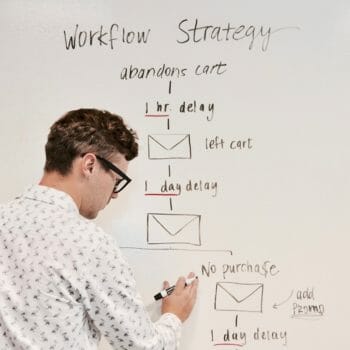
Microservices Transformation Journey
- Posted by Adham Jan
- On July 20, 2020
With the market changing demand, organizations are competing over business agility and their time-to-market to roll-out new features. Like many organizations believe that the key to build and deliver quick releases is transforming their IT infrastructure, there is always a challenging question; How to start our microservices transformation journey given our large existing legacy infrastructure?
Why Organizations Consider Microservices Transformation?
Every organization has its own drivers to transform their IT infrastructure, here are the significant ones:
- Rigid IT Platforms
Current systems are not responsive to business changing demand and it takes months to deploy new features instead of days or weeks. - Scalability
IT infrastructure may be highly available but not scalable. - Cloud-native applications
Some organizations have a strategy of building cloud-native applications and this require container platforms like OpenShift and Kubernetes. - Exposing APIs
Wrapping legacy systems and exposing APIs is another driver; some organizations aim to offer their business and services in form of APIs built over cloud native apps platform.
How Organizations Start Their Microservices Transformation Journey?
Each organization has its own drivers behind modernizing their IT Infrastructure, hence the differences in some transformation journeys. However, here are common essential steps smoothing your application modernization transition.

1. Discovery
The objective of the discovery phase is identifying an organization’s current challenges by creating an IT application inventory. That is, identifying a list of applications along with their description of use, processes they support and their relationships to other systems. IT application inventory helps identifying the pain points and the complexities slowing down the process of shipping new features. A simple example for a challenging system could be an application supporting critical processes of loan origination in a financial institution and it has high dependencies with other applications.
2. Envisioning
Upon determining the pain points, we envision the impact of transforming applications in relevance to the organization’s business goals. For example, if loan origination application requires several updates across the year and changing scaling needs and loans are of high priority to the financial institution’s strategic objectives; then this could be considered as a high-priority service. The purpose of this phase is identifying and evaluating a quick win; what applications to modernize?
3. First Microservices Application
Implementing your first microservices application depends on your drivers behind modernizing your IT infrastructure. Here are different approaches:
- Migrate & Containerize a legacy application.
- Refactor an application by breaking it into microservices.
- Replace a monolith service by incrementally replacing functions with new implementations.
- Expose APIs of an existing application for enhanced accessibility by other applications.
- Add a new feature to an existing application with microservices architecture.
Check-out our latest Success Story with microservices transformation
4. Monitor
Now that you have deployed your first microservices application, monitoring has never been easier with container platforms like OpenShift. OpenShift automates the process of deployment and containers management over Kubernetes, which paves the way for your DevOps culture. In this phase, you can monitor your workload, down-times and scale your application based on your needs.
5. Roll-out
After going live with the first microservices application, organizations innovate incrementally by revisiting their IT application inventory and defining the next applications to transform.
Sumerge Cloud Consulting Team has helped organizations modernize their IT infrastructure, increasing their business agility and scalability. Check-out our microservices solutions and book free consultation with our technical architects.




